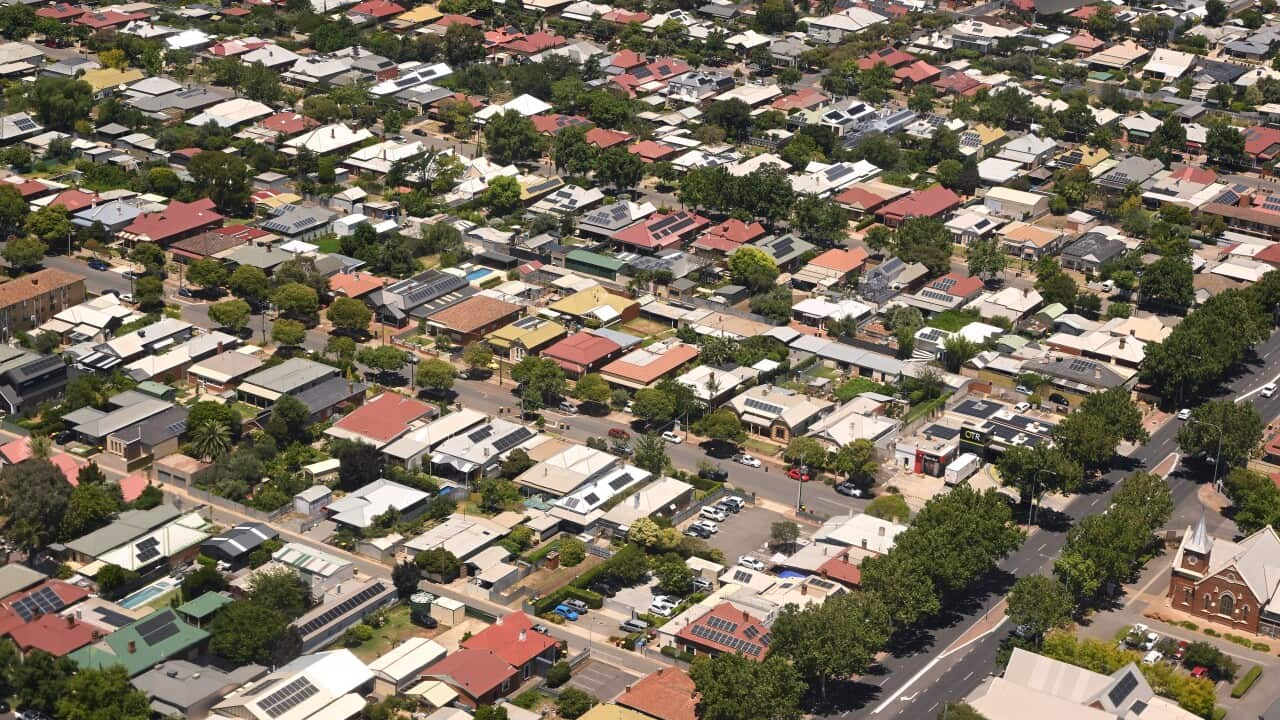Nearly 200 Australian suburbs have more than doubled in value over the past five years, with Queensland suburbs leading the list, counting 93 areas with value increases of 100 per cent.
The figures from Domain's latest house price report reveal an uptick in desirability for regional suburbs far from the CBD.
South Australia's Davoren Park, once known as one of Adelaide's most disadvantaged suburbs, saw property values increase by nearly 200 per cent in five years.
While Queensland has the highest number of suburbs that doubled in value, South Australia's prices have increased significantly over the past five years — six of the nine suburbs with growth of more than 150 per cent were situated in suburban South Australia.
Joel Bowman, senior economist at Domain, said the shift was "remarkable".
"I think it'd be hard to characterise South Australia as affordable," he told SBS News.
"I would say it's now more expensive to buy a home in Adelaide than in Melbourne."
The suburbs with the highest growth
The local government area of City of Playford in Adelaide's north saw ten of its suburbs more than doubling in value over the last five years.
The starkest increase is in Davoren Park, with a median property value increase of 192.5 per cent over five years.
It's followed by neighbouring Elizabeth East with an increase of 175.3 per cent, Elizabeth Park with 167 per cent, Elizabeth Downs with 165.2 per cent and Elizabeth Vale with 157.1 per cent.
Finally, Hackham West in Adelaide's Onkaparinga locality saw a property value increase of 152.8 per cent.
Western Australia has also emerged as a major contributor to the rise in house medians, with the value of 45 suburbs doubling over five years.
Swan, north-east of Perth, and Rockingham on the south-west coast had the most number of suburbs double in value.
Jacobs Well in Queensland saw an annual increase of 39.6 per cent, leading to a 141.4 per cent growth in property value over five years. Nearly 100 suburbs in the state doubled in price over the same period.
Across Australia, suburbs with the highest growth were concentrated in once-affordable areas.
Bowman said that relative affordability was a key driver of increased migration to suburbs from the "bottom end" of town.
"Particularly in Queensland, Western Australia and South Australia, the areas with the biggest growth are those where prices are well below the state's typical median prices," he said.
Bowman pointed to Colebee in Blacktown North, 33 kilometres from Sydney's city centre.
"Property values there have increased more than 180 per cent over five years."
For property owners in these suburbs, the report signals a boon for their assets. But for renters and aspiring home buyers, it's a different story.
Housing affordability crisis
A recent report from global property information and analytics company Cotality (formerly CoreLogic), found housing affordability was getting worse "across the board".
Eliza Owen, head of research at Cotality, said, "For first home buyers, the metrics are pretty disappointing.
"There's this real disparity between where incomes are and where property prices are that shows a kind of structural shift in who can access the market."
Domain's figures also reveal an affordability issue: the median house price in Davoren Park is now $555,000, while the median weekly household income at the latest census was just $1,161.
A similar affordability gap is playing out in suburbs across Australia.
"There's been this extraordinary separation between property prices and income," Owen said.
"It definitely speaks to a widening in the divide of the haves and have nots when it comes to the property market."
Bowman said while the value increases in some suburbs were "promising", renters or people looking to move would unfortunately be facing much higher prices.
"There are winners and losers," he said.
He noted that Melbourne was shaping up to be an option for those seeking affordability.
"There are early signs of people coming to Melbourne," Bowman said.
"During the pandemic, we had a lot of people leaving Melbourne, but we have started to see this trend reverse as the city has become a lot cheaper, comparatively."
What's driving skyrocketing house prices?
Bowman pointed to an increased interest in "lifestyle migration", which began during the widespread adoption of remote work during the COVID-19 pandemic.
People had begun to desire affordable houses in coastal or regional areas, rather than being tied to pricey city lifestyles.
"The shift towards remote working really benefited regional pockets," he said.
"More than eighty of the suburbs with the largest growth were in regional areas, rather than inner rings of capital cities.
"The other thing we're seeing is the tight rental markets. A surge in population in these areas resulted in record-low vacancy rates across Australia. Low vacancy rates are pushing up these property prices."
Bowman anticipated property prices would only rise.
"Broadly we are expecting some price growth, house prices will increase 6 per cent," he said.
Underpinning this projected growth are the low interest rates seen this year, coupled with the expanded First Home Buyer scheme, which Bowen said would result in more buyers getting their foot in the door.
He expected property prices to experience an uplift, especially in typically "cheaper pockets" as a result of the scheme.
"All in all, we've seen remarkable growth due to lifestyle migration, remote work, affordability shift and increased competition," Bowen said.
"Looking ahead, given the impact of the guarantee scheme, I think it will continue to improve."
— With additional reporting from the Australian Associated Press.
Share





